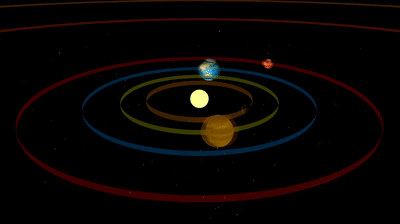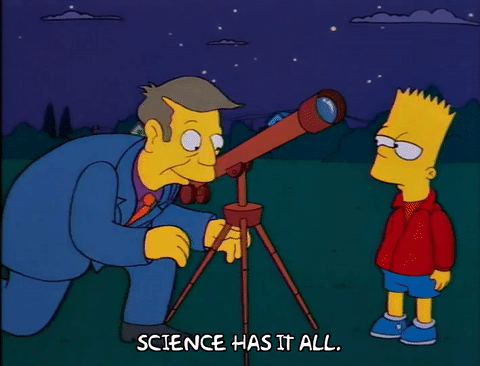On Monday 11th November, something exciting will happen: Mercury will pass between Earth and the Sun. This is known as ‘transit’ and it is exciting for two reasons. First, the planet will be visible for about 5 ½ hours against the backdrop of the Sun. Second, this sort of event is rare: the last time Mercury transited was in 2016, and it won’t happen again until 2032. So if you want to see this unusual phenomenon, Monday is your last chance for the next 13 years!
[WARNING: Never look at the Sun directly, or through a telescope or binoculars, without taking special protective measures. I’ll tell you how you can view the transit of Mercury safely later in this post.]

Why does transit happen?
To understand transit properly, we need to get back to basics. The Sun is the star at the centre of our solar system and all the planets (including Earth) move around it in roughly circular orbits. Mercury is the smallest planet in the solar system, and the closest to the Sun.
Transit happens when something passes between Earth and the Sun – in this case Mercury, but other things can transit too, including Venus (the second closest planet to the Sun) and our Moon (which we see as a solar eclipse). For as long as Mercury is in transit, we will be able to see it as a tiny black dot against the surface of the Sun. Usually we can only see Mercury at night, at certain times of the year, and it looks like a small point of light in the sky because it reflects the light of the Sun. Transit gives us the rare opportunity to see Mercury in the day as it passes between us and the Sun.
This Monday, Mercury will start its journey across the Sun at 1235 GMT and end at 1804 GMT. The planet will probably be easiest to spot a couple of hours after transit has begun, when it will have travelled a good distance across the Sun’s surface. Fortunately for planet-gazers, we know precisely when this phenomenon will happen because the planets move in steady, predictable ways, and a bit of maths means we can calculate when we’ll see transit, down to the minute!

How can I view it?
Mercury is very small and very far away (on average, about 48 million miles away, in fact), which means you won’t be able to see it transiting the Sun with the naked eye – so whatever you do, don’t try to stare at the Sun! That’s extremely dangerous to do anyway, and it definitely won’t help you see Mercury. Instead, transit is best seen through a telescope or binoculars, but once again safety measures are essential. You will need magnification of at least 50 times, and a special solar filter (no, eclipse glasses will not do) to be sure of seeing the planet.
Probably the best way for most of us to view Mercury’s transit is to find an event in our area, run by someone with the right equipment and technical know-how to make it happen. Major cities around the world are running public viewing events, and if you have an astronomical society, science centre or observatory near you, check their website to see if they’re running an event you can go to.
If you do own a telescope or binoculars, but don’t have a solar filter, it’s possible to project an image of the Sun onto a piece of paper, so you can watch the transit safely. Sky and Telescope gives you detailed advice about how to set up a projection of the Sun.
Finally, if none of the above methods are an option for you, or (and this is more likely!) it’s a cloudy day on Monday, you might be best viewing the transit online. A number of places will be livestreaming the event, including the UK’s Greenwich Royal Observatory and the Griffiths Observatory in Los Angeles.
However you choose to watch it, I hope you enjoy this rare event and that it makes you feel even a little bit as excited about space as I am!


Lovely animations
LikeLike